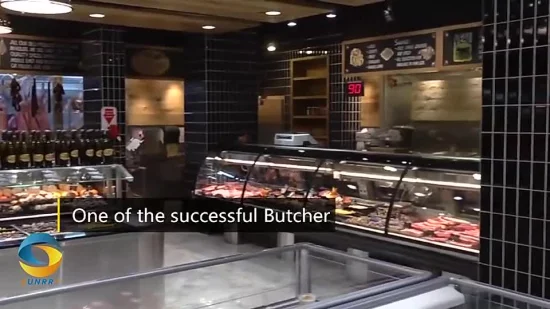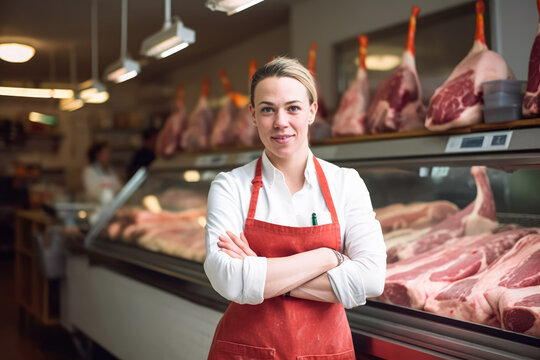From Ranch to Table: Welcoming the Tradition of Meat Markets and Butcheries
In an era dominated by benefit and automation, there exists a peaceful transformation occurring in the culinary world - a return to the roots of food sourcing with the custom of meat markets and butcheries. These establishments, typically ignored in the darkness of grocery stores, are experiencing a renewal as critical customers look for top quality, traceability, and a link to the origins of their food. What is driving this shift back to the methods of old? The response lies in the intersection of heritage practices, moral factors to consider, and a need for a much more authentic gastronomic experience.
The Resurgence of Meat Markets
The rebirth of meat markets across various areas suggests a shift in the direction of a renewed appreciation for in your area sourced, quality meats. Recently, consumers have actually ended up being more aware of the origins of their food, leading to an expanding demand for openness and sustainability in the meat industry. This fad has led the way for the revival of typical meat markets and butcheries, where customers can straight interact with educated butchers and source their meat from neighboring farms.
Among the essential driving variables behind this revival is the need for higher top quality and fresher products. By buying meat from neighborhood markets, consumers can make certain that they are getting fresh cuts that have actually not traveled cross countries or been sitting in storage space for extensive periods. In addition, supporting regional meat markets aids reinforce the neighborhood economy and advertises area connections.
Additionally, the resurgence of meat markets lines up with the more comprehensive movement in the direction of sustaining small-scale farmers and sustainable farming practices. By selecting to purchase from these facilities, customers are not only getting better high quality meat however additionally adding to a more moral and environmentally friendly food system.
Craftsmanship in Butcheries
With the revival of meat markets highlighting high quality and sustainability, the focus moves towards acknowledging the elaborate craftsmanship showed in modern-day butcheries. Workmanship in butcheries surpasses simply reducing meat; it symbolizes an ingrained custom of experience and accuracy in taking care of various cuts of meat - Bagley Farms Meat Market. Butchers, usually educated for many years, possess a riches of knowledge on the anatomy of pets, blade skills, and the art of breaking down carcasses successfully
In modern-day butcheries, workmanship is apparent in the way butchers thoroughly resource their meat, making certain high criteria of high quality and ethical techniques. They take satisfaction in comprehending the provenance of the meat they offer, functioning carefully with regional farmers and suppliers to supply clients full openness and traceability.

In Your Area Sourced Meat Quality
Amid the expanding passion in lasting techniques, a concentrate on locally sourced meat quality has ended up being significantly noticeable in the meat market sector. Customers are progressively seeking transparency in the sourcing and manufacturing of their meat, leading to a surge sought after for locally raised and processed meats.
Locally sourced meat offers numerous benefits, including fresher items, assistance for neighborhood farmers, and lowered ecological influence as a result of lowered transport distances. By buying meat from nearby farms and butcheries, consumers can have extra self-confidence in the top quality and security of the products they are purchasing.
Additionally, locally sourced meat frequently comes from pets that have actually been increased in more gentle problems, with a focus on animal well-being and lasting farming practices. This ethical strategy to meat manufacturing resonates with several customers who are worried concerning the origins of their food and its effect on the setting.
Farm-to-Table Buying Experience
In the realm of in your area sourced meat high quality, the farm-to-table shopping experience supplies consumers a straight link to the origins of their food. This one-of-a-kind buying navigate to this site experience allows clients to trace the journey of their meat, from the ranch where the animals were increased to the table where it will be appreciated. By taking part in farm-to-table purchasing, individuals can gain a much deeper understanding of the check here farming practices, pet welfare requirements, and sustainability efforts associated with producing their meat.

Tradition Satisfies Modern Society


The merging of traditional meat markets and butcheries with modern society presents a distinct chance for the conservation of artisanal methods in a modern context. While contemporary innovations have actually changed numerous sectors, the significance of standard meat markets and butcheries stays deeply rooted in background and workmanship. This mix of practice and modernity permits the extension of classic methods while adapting to the needs and preferences these days's customers.
In today's busy globe, where benefit typically overtakes top quality, there is an expanding gratitude for the heritage and authenticity that traditional meat markets and butcheries offer. Customers are progressively seeking transparency in the sourcing and manufacturing of their food, leading them back to the tailored solution and competence discovered in these establishments. In addition, the focus on sustainability and ethical practices straightens with the values anchor upheld by several typical meat markets and butcheries, promoting a sense of area and obligation towards the setting.
As society continues to advance, the coalescence of custom and modernity in meat markets and butcheries not only makes certain the preservation of artisanal techniques but additionally enhances the cooking landscape with a blend of heritage and technology.
Final Thought
In conclusion, the custom of meat markets and butcheries is experiencing a resurgence in contemporary culture. These establishments supply locally sourced meat of high top quality, providing a farm-to-table buying experience for customers. The craftsmanship and expertise discovered in butcheries add to the authenticity and value of the items offered. By accepting this practice, individuals are able to link with their food in a purposeful way, connecting the void between the past and the here and now - Bagley Farms Meat Market.
In an age controlled by ease and mass manufacturing, there exists a quiet transformation taking location in the cooking world - a return to the roots of food sourcing with the custom of meat markets and butcheries.The renewal of meat markets throughout numerous communities indicates a shift towards a renewed gratitude for in your area sourced, high quality meats.With the renewal of meat markets emphasizing top quality and sustainability, the emphasis changes in the direction of identifying the detailed workmanship presented in modern-day butcheries. Workmanship in butcheries goes past simply reducing meat; it symbolizes an ingrained custom of know-how and accuracy in managing various cuts of meat.In today's hectic world, where benefit frequently defeats high quality, there is a growing gratitude for the heritage and authenticity that traditional meat markets and butcheries supply.